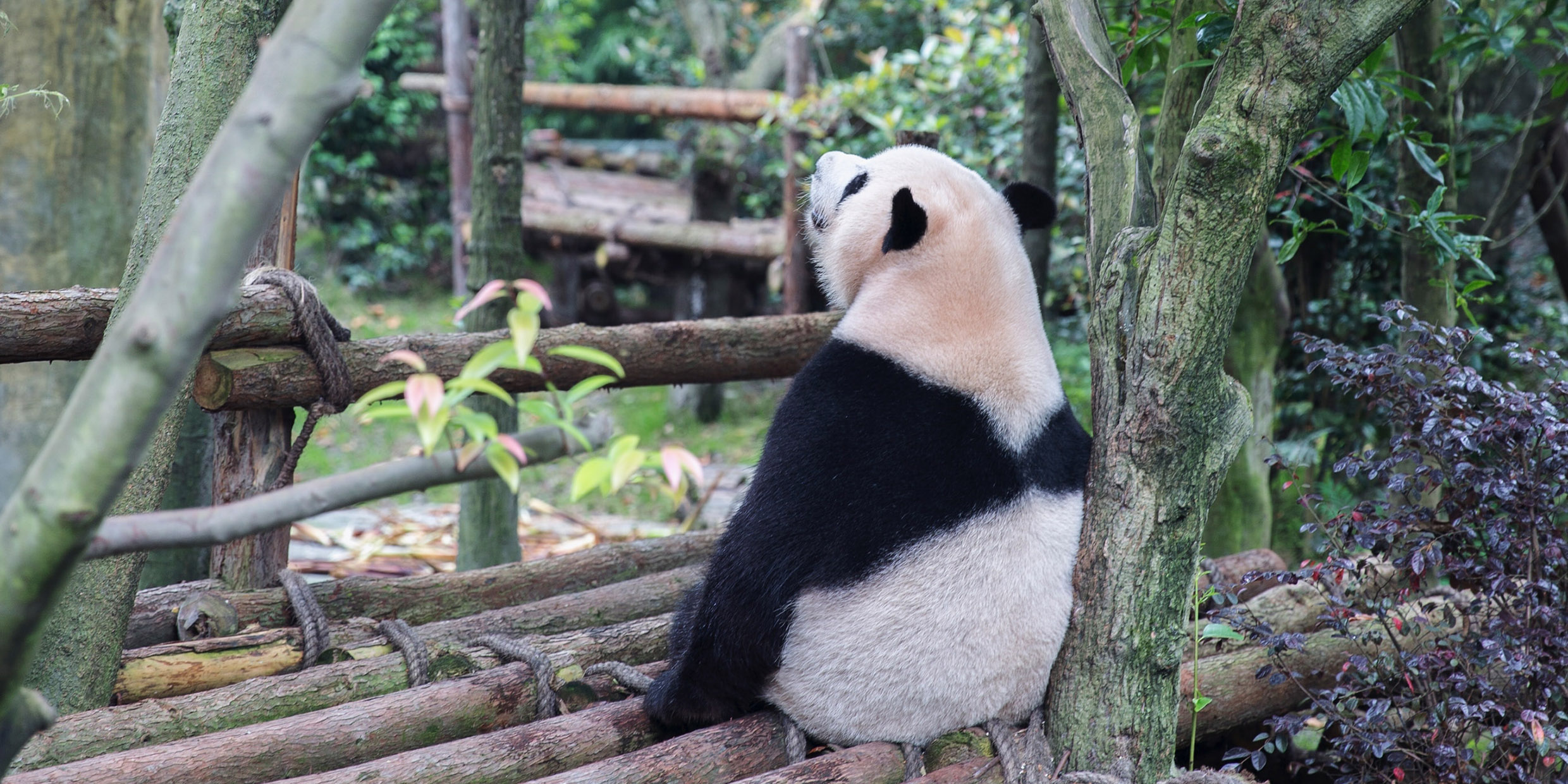Originally published 28 October 1985
Here is a surprise. The giant panda is a bear, and not — as many zoologists supposed — a raccoon. But wait, I am getting ahead of myself.
The story begins with Richard Nixon’s historic visit to China in 1972. The President returned with a precious gift from his Chinese hosts: a pair of giant pandas for the Washington National Zoo. Nixon’s pandas, Ling-Ling and Hsing-Hsing, quickly established themselves as the zoo’s superstars. The animals proved themselves to be irresistible. In a panda’s presence we are all happy children.
There are fewer than a thousand giant pandas still residing in the wild, all of them in a few small regions of central China. They are threatened by an expanding human population and the encroachment of farms upon the stands of bamboo that are their primary food.
The situation distresses the Chinese, who consider the panda a national treasure. They are cooperating with the World Wildlife Fund in an effort to stave off the panda’s decline. But the Chinese also recognize that they have an international hit on their hands, and they have continued to use pandas as instruments of diplomacy. National zoos around the world have acquired pairs of Chinese pandas.
The births of baby pandas, in Tokyo, Madrid, and Mexico City, have been causes for national celebration. But in Washington, Ling-Ling and Hsing-Hsing have obstinately refused to produce offspring. The zoo tried artificial insemination and a borrowed mate from the London Zoo in attempts to impregnate Ling-Ling, all without success. Some dark-spirited folk saw Ling-Ling’s continuing infertility as a shadow on our national pride.
A question of terms
Then, this past summer, hormonal injections brought Ling-Ling into heat, and the American pandas enjoyed a triad of closely watched couplings. The outcome remains uncertain. Apparently, it is very difficult to tell if a panda is pregnant.
And there is a frustrating vagueness about the time it can take for a female panda to come to term. The birth of the first native American panda, if it is to occur, could come as early as next week, or as late as December.
Meanwhile, inspired by the panda hoopla, scientists from the National Zoo and the National Cancer Institute have been attempting to solve a long-standing panda riddle: Is the giant panda a raccoon or a bear?
Ever since the giant panda was first described by western naturalists a century ago, zoologists have debated about how the animal should be classified.
There is general agreement that the giant panda’s diminutive cousin, the lesser panda, is a member of the raccoon family (Procyonidae). But no such certainty has existed concerning the giant panda’s place in the evolutionary tree. The giant panda looks like a bear, but it is mostly a plant-eater, and bears are carnivores. Unlike the bear, the giant panda does not hibernate, and it bleats rather than roars.
The giant panda and the lesser panda share a distinctive coloring and they share certain characteristics of tooth structure, skull architecture, and shape of the male genitalia. All of this has led to a growing consensus in recent years that the giant panda should be classified with the lesser pandas and raccoons.
The bear factors
And now comes the the report of the Washington scientists who conclude that the panda is a bear after all. The scientists used three different techniques to reconstruct the ancestral lineage of the giant panda.
First, they compared similarity of DNA structures in a group of animals that included the giant panda, the lesser panda, three species of bears, and the raccoon. Second, they measured the specificity of the immune response within the same group of animals, by measuring reaction rates of antibodies from one species to antigens from another, a technique that is highly sensitive to similarities of protein structure. Third, they compared the number and structure of chromosomes from the different species.
All three comparisons converged on the same conclusion: The giant panda is closely related to the bears.
These kinds of molecular and chromosomal studies also reveal something about the time scale of evolutionary change. The giant panda appears to have diverged from the bear lineage only about 15 million years ago, whereas the lesser panda and the raccoon has have been evolving on their own for 40 million years.
Whether Ling-Ling and Hsing-Hsing would feel more at home with the bears or the raccoons, no one knows. Superstars tend to forget their humble origins. And there are more important things to think about.
Is Ling-Ling pregnant? Will America soon thrill to the birth of its very own panda cub? Will Nixon’s China policy at last come to happy fruition in the panda enclosure at the Washington National Zoo? Stay tuned.
While in captivity, Ling-Ling and Hsing-Hsing had five cubs, although none survived more than a few days. Ling-Ling died in 1992, and Hsing-Hsing in 1999. Since then, a new pair of Giant Pandas have taken up residence in the National Zoo — Mei Xiang and Tian Tian — who gave birth to a cub, Bei Bei, in 2015. ‑Ed.



